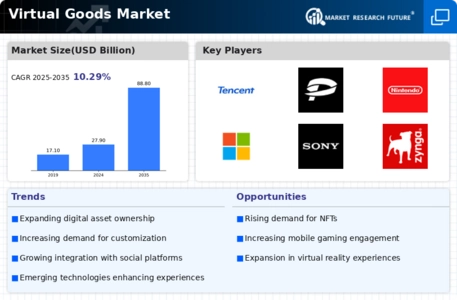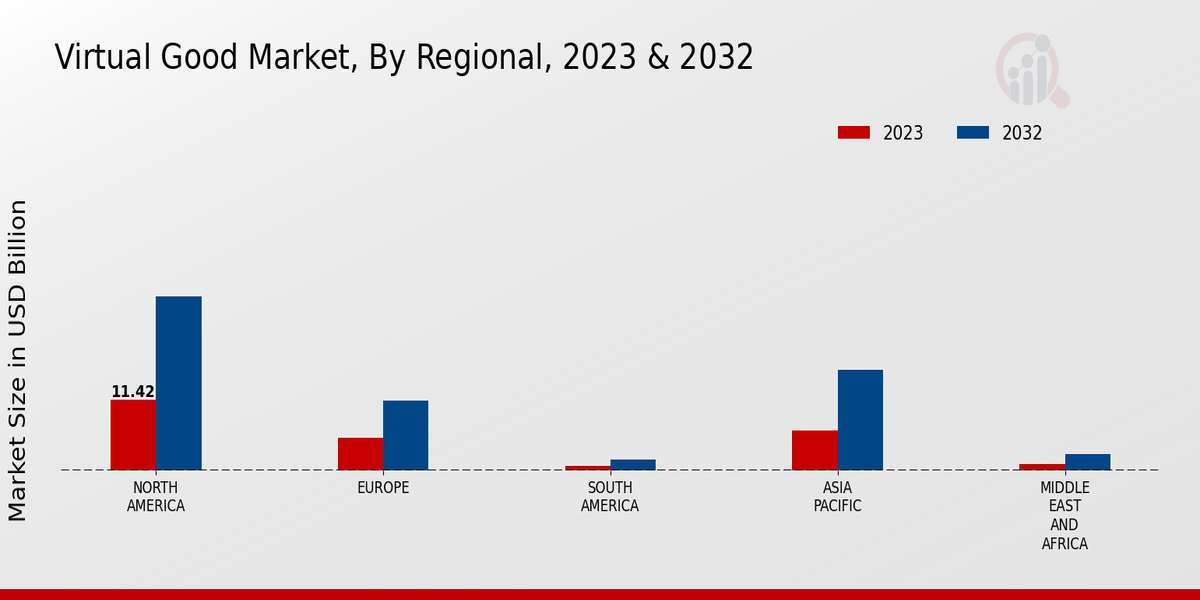Market Trends and Projections
The Global Virtual Goods Market Industry is projected to experience substantial growth over the next decade. In 2024, the market is expected to reach 27.9 USD Billion, with a forecasted increase to 88.8 USD Billion by 2035. This growth trajectory suggests a compound annual growth rate of 11.09% from 2025 to 2035. Key drivers include the rising demand for digital experiences, the expansion of e-commerce platforms, and advancements in blockchain technology. As these trends continue to evolve, the market for virtual goods is likely to become increasingly integral to the global economy.
Expansion of E-commerce Platforms
The Global Virtual Goods Market Industry benefits from the rapid expansion of e-commerce platforms that facilitate the sale of virtual goods. Major online marketplaces and gaming platforms are increasingly integrating virtual goods into their offerings, allowing consumers to purchase digital items seamlessly. This integration not only enhances the shopping experience but also drives sales growth. As e-commerce continues to evolve, the market for virtual goods is expected to flourish. The anticipated growth trajectory suggests that by 2035, the market could reach 88.8 USD Billion, indicating a robust shift towards digital transactions and the monetization of virtual assets.
Rising Demand for Digital Experiences
The Global Virtual Goods Market Industry experiences a notable surge in demand for immersive digital experiences. As consumers increasingly seek interactive and engaging content, virtual goods such as in-game items, digital art, and virtual real estate gain traction. This trend is particularly evident in the gaming sector, where players are willing to spend on virtual assets to enhance their gameplay. In 2024, the market is projected to reach 27.9 USD Billion, reflecting a growing consumer preference for digital over physical goods. This shift indicates a broader acceptance of virtual goods as a legitimate form of value, potentially reshaping consumer behavior in various sectors.
Growing Acceptance of Virtual Economies
The Global Virtual Goods Market Industry is characterized by a growing acceptance of virtual economies, where digital currencies and assets hold real value. As consumers become more familiar with virtual transactions, the willingness to invest in virtual goods increases. This acceptance is evident in various sectors, including gaming, social media, and online marketplaces. The proliferation of virtual currencies further supports this trend, as users engage in transactions that blur the lines between physical and digital economies. This evolving landscape indicates that the market for virtual goods is likely to expand, driven by a cultural shift towards recognizing the legitimacy of digital assets.
Technological Advancements in Blockchain
The Global Virtual Goods Market Industry is significantly influenced by technological advancements in blockchain technology. Blockchain provides a secure and transparent method for buying, selling, and trading virtual goods, which enhances consumer trust. The rise of non-fungible tokens (NFTs) exemplifies this trend, allowing creators to monetize their digital assets effectively. As blockchain technology matures, it is likely to facilitate new business models within the virtual goods sector. This could lead to increased market participation and innovation, potentially contributing to a compound annual growth rate of 11.09% from 2025 to 2035, as more stakeholders recognize the value of secure digital ownership.
Increased Investment in Gaming and Metaverse
The Global Virtual Goods Market Industry is witnessing increased investment in gaming and the metaverse, which drives demand for virtual goods. Major technology companies are allocating substantial resources to develop immersive virtual environments where users can interact, socialize, and transact. This influx of capital not only enhances the quality of virtual goods but also expands the market reach. As the metaverse concept gains traction, the potential for virtual goods to become integral to user experiences grows. This trend suggests that the market will continue to evolve, with virtual goods becoming a cornerstone of digital economies in the coming years.



























Leave a Comment